
Writer’s note: This is Part 2 of a two-part story. To read Part 1, click here.
PUNTA GALLINAS, La Guajira — They share a coastline and the Caribbean currents, a desert and a rainforest so pure and serene, our dreams cannot comprehend it.
Parque Nacional Natural Tayrona is a popular stop for tourists, a lush national park with big hills behind a beautiful beach, a place I have wanted to go for some time now.
La Guajira, Colombia’s northeast peninsula, just came on my radar recently, after a friend had gone, and I wanted to see the same topography she did, a desert and a beach right next to each other.
Normally I like to keep these posts shorter, to avoid prattling on because I know you have better things to do than to read about what I’ve done. But every now and then, you experience something that requires more time to explain it, more words.
A friend once said that the key in these kinds of longer stories is leaning the words up against each other just right, so they don’t all fall down.
I hope I was able to do that here.
Parque Nacional Natural Tayrona
The ants — hundreds of them, almost half as big as jelly beans — crossed the trail and carried food and leaves, a fitting symbol of the laborious lifestyle travelers here might be leaving behind.
Tayrona is a great place to go, to get away from the daily grind that consumes us sometimes. Or maybe it’s another stop on a long trip around Colombia, South America, the world.
No matter the motive, it’s a good stop.
I took a bus from Santa Marta to the entrance of the park then made the hike all the way to Cabo San Juan de la Guia, a busy campsite on the beach. The bus took about an hour, the hike about three.
We got a bit of a late start so toward the end, we were walking the park’s trails, relying mostly on instinct because much of the daylight had left us. At one point, we heard all this screeching coming from the trees.
Bats.
They were about to wake up. One of them later flew toward me, then darted upward at the last second to miss me, like a little fighter jet.
We made it to the site just before it was completely dark and got a tent. Don’t get a tent. It’s hot. The hammocks are better, especially the ones in the gazebo atop the rocks that separate the two beaches at Cabo San Juan. Just bring a jacket and pants because the wind from the water is a little chilly at night, I’ve been told.
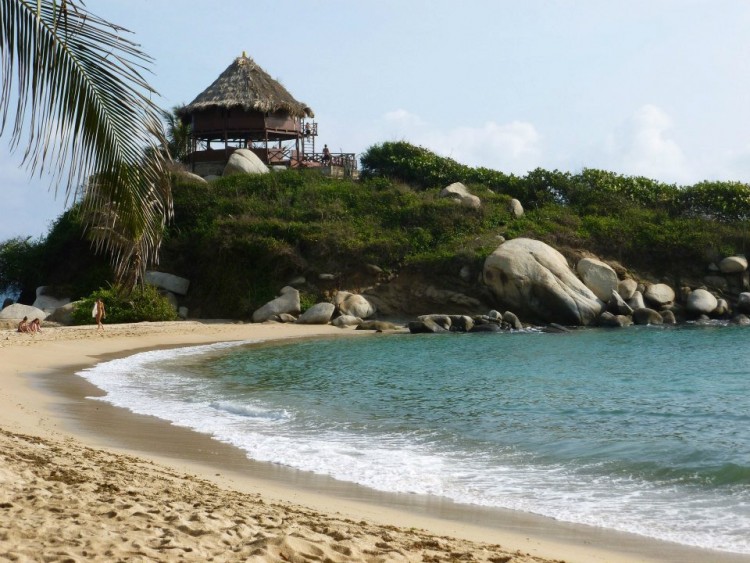
Hammocks and tents cost the same, 25,000 pesos (about $13) per person. There are only four bathrooms, four showers and two sinks, one that wasn’t working, so pack your patience too.
One morning, I saw a girl putting on makeup while I was brushing my teeth. I thought to myself, “At a campsite? Can’t you learn to rough it for a couple of days?” Then I gargled with Listerine, putting into question who the princess really was.
When you factor in the facilities, camping at Cabo de San Juan might sound a bit expensive. It’s more than a dorm bed at a hostel. But a dorm bed usually isn’t meters from the beach.
Everyone else seemed to know this too, the reason it was so crowded and the restaurant on site could charge outrageous prices for food, like the 20,000 pesos (about $11) I paid for mojarra, a blue fish abundant in this area. It was good and came with rice, salad and French fries, but I paid less for lobster in La Guajira.
I liked Tayrona but by the middle of the next day, I was headed back to Santa Marta, to prepare for the excursion that excited me the most.
La Guajira
The desert dunes tumble toward the water, nearly untouched mounds of sand that seem so surreal from a sparkling sea.
I didn’t know this place existed. I almost never found out.
When I decided to go to La Guajira to end my birthday trip, I figured we would go as far as Cabo de la Vela, about 6 1/2 hours northeast of Santa Marta.
Punta Gallinas would be nice, I thought, but would it be worth it to go three or four hours deeper into the desert before arriving along the northern-most shores in South America?
Official tours, which you can book through your hostel or tourism agencies in Santa Marta, can cost 500,000 pesos (about $260) roundtrip. My friend Charlotte found a good deal — 300,000 pesos or less (about $155) using tips from a local friend — so the answer came easy.
The five of us wanted our bumpier trip for another reason, something bigger than the money. We wanted a real adventure, the excitement of the unknown, of not knowing exactly where you would find your next ride or place to sleep.
La Guajira would be perfect. It basically belongs to the Wayuu, the indigenous people who have lived here since the Spanish arrived, and major development is not allowed.
We stayed in Cabo for the night after finding out we couldn’t leave for Punta Gallinas until the morning. We saw an amazing sunset, ate an entire fried snapper, slept less than 10 yards from the water.
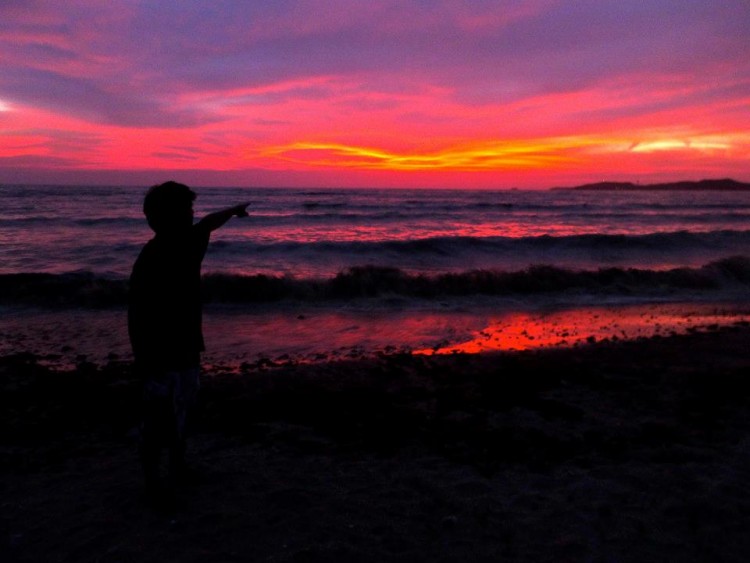
As soon as we arrived, a woman, one of the local Wayuu tried to sell us some bracelets. She just stood there staring at us, tilting her head from one side to the other every five seconds or so, a blank look on her face, wondering why we hadn’t pulled out our money yet.
Later at dinner, following my suggestion, Charlotte and Joe tried the eyes of the snapper, one of my favorite parts. They liked it too. Our time there cost us only 20,000 each, 15,000 pesos (about $8) for the dinner, 5,000 (about $2.70) for the hammock.
By 8 the next morning, we were on our way to Punta Gallinas.
Our trip had already required 3 ½ hours on a bus (15,000 pesos each) from Santa Marta to the intersection of highways 90 and 88, a place we would negotiate with a car owner to drive us to Uribia (5,000 pesos each).
More negotiation followed in Uribia, where the locals would actually grab you to get your attention, to try to get a commitment from you to pay them to take you to Cabo de la Vela, to justify their time waiting in the desert heat.
We each paid 12,000 pesos (about $6.25) for a cramped, three-hour ride in the back of a truck with a bunch of bags and supplies, and four women and a little girl, all of them Wayuu.
The tarp-covered yet windowless truck bed trapped the dirt and dust that the tires stirred, dressing us with a gray and yellow coat, me getting the worst of it, all of us getting rid of it in the water along the Cabo shore.
We had better luck on the next leg of the trip. The truck bed had a real camper. That meant doors, windows, minimal dust.
The truck left us at an inlet where we took a small boat to the other side, to ride in a big truck with an enclosed and uncovered bed, the sides high enough to hold small horses.
Our group had nine — Ashley, Charlotte, Joe, Naomi and I, and two couples we met in Cabo, one from Spain, one from Italy. We went through a guy named Daniel, a local who connected us with other Wayuu, and the size of our group cut the cost of transportation (going and returning, plus tours of Punta Gallinas) from 150,000 pesos each (about $80) to 120,000 (about $65).
More than three hours later, we had arrived.
We slept in hammocks under an open-air hut with a thatched roof, outside a house owned by a Wayuu woman named Victoria.
We had lobster tail two nights in a row, each time with rice, salad and patacones (green banana flattened and fried until it’s crunchy as a potato chip). It was delicious, and cost the same as the snapper in Cabo, 15,000 pesos.
Our first activity was a quick walk to the water, to the bay behind our camp site. Charlotte and I noticed a lizard on the shore, a big one. As I pulled my camera out, it got up and ran on its hind legs, not only on the sand but on the water too. I think it was a Jesus lizard, its name derived from its ability to walk on water.
Afterward Charlotte and I wondered if big development would someday make its way here, some big resort or something, the start of major changes. Probably not, we figured. Not enough infrastructure.
The nearest paved roads are more than six hours away and it takes a special kind of traveler to endure the dirt and the heat and the rough roads of the journey. We smiled, knowing the place had a chance to maintain much of its natural state for a long time.
We followed up the swim with a trip to one of the points, to watch the sunset, and for those who hadn’t changed to drier clothes — Charlotte and Ashley — to swim again.
It was a pretty sunset, the beach as well, and we planned to ask to return the next day.
We didn’t know yet what we were about to experience.
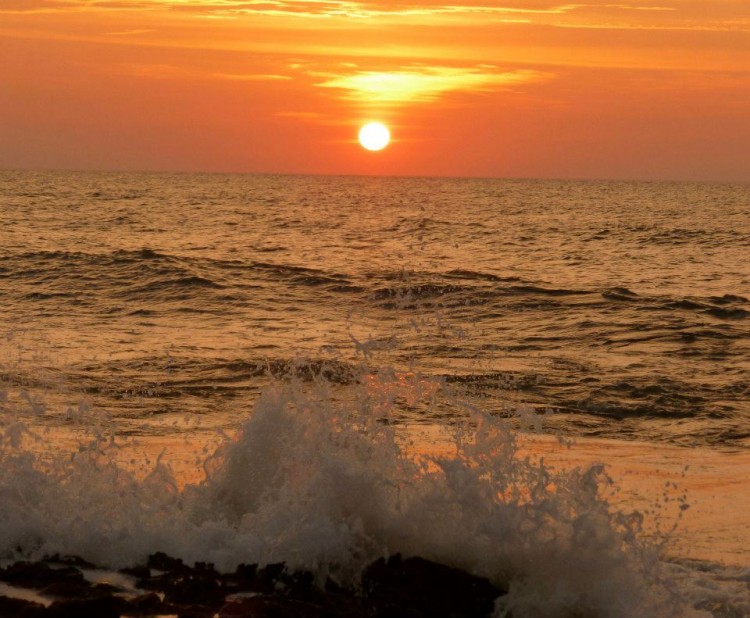
Our first activities of our last day there were nothing spectacular: a stop at a lighthouse that looked more like a cell phone signal tower, and a beach littered with tiny sticks and rocks, and hindered by seaweed and a mucky sea floor that swallowed your feet.
The best part was seeing a hawk having its lunch.
An hour later, we were back at the campsite to eat some lunch of our own, some fruit, crackers and granola we had brought with us.
Our guide told us that we would have the chance to swim again after our trip to the sand dunes, but I don’t think any of us expected the two activities to merge the way they did. I know I didn’t. I didn’t like what I saw when I looked up by the campsite. The sky was bruised. Dark clouds were hovering.
My concerns dissipated when we arrived at the dunes, climbed one of them, and found utopia on the other side.
The sand slid down a 45-degree incline to the most idyllic beach I have ever seen, better than any I have been to in Mexico or The Bahamas, California or Florida, Chile or Uruguay, even Hawaii, my home state.
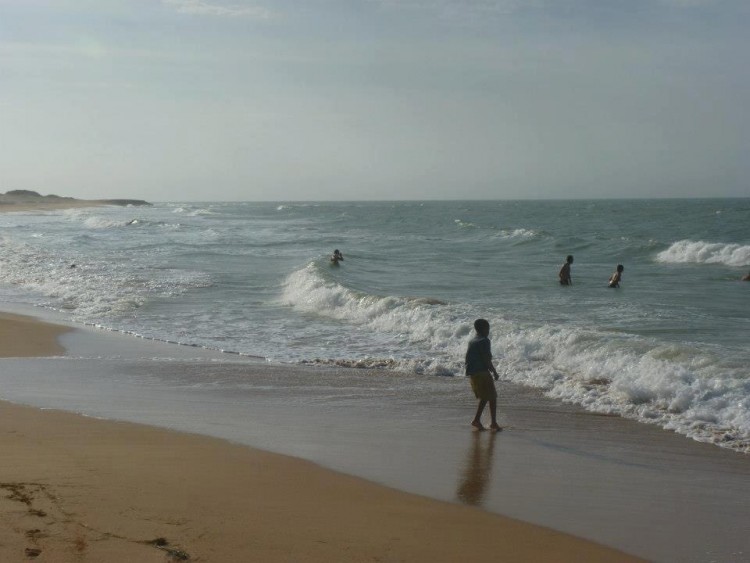
Playa Taroa is what a great beach should be, few sticks, fewer rocks, no seaweed or muck, nothing to distract you from the aqua-colored water.
The sky was perfect too. Most of the clouds were thin and white and translucent, like sheets of Kleenex. There were also waves big enough to body surf, to take us back in time, make us kids again.
The topic of surfing got Joe and I thinking about Point Break, the 1991 action flick in which Keanu Reeves plays FBI agent Johnny Utah, who learns how to surf so he can catch a group of board-riding bank robbers led by Patrick Swayze.
We joked about creating a sequel, how the antagonists would still wear masks of former presidents, as they had in the first one, only this time they would rob the humble Wayuu instead of booming banks, a rash of crime that only Agent Utah could curtail.
With Swayze now dead, we picked Paul Walker to take his place as the lead bad guy in “Point Break 2: Down by the Dunes.” Imagine the unintentional comedy of Reeves and Walker staring each other down during the start of a fight scene, tilting their heads from one side to the other every five seconds, that famous blank look on their faces the whole time. Maybe they could try to sell each other some bracelets.
We wished we could stay here a lot longer but time was winning again, forcing us to head back to the truck. As we drove away, I noticed the dimples in the dunes from our walk, knowing wind and the rare shower would wipe them away.
But if another group came sooner rather than later and noticed the evidence, it wouldn’t matter. We were there for just a few hours, only nine us, not nearly enough time or people to really change anything.

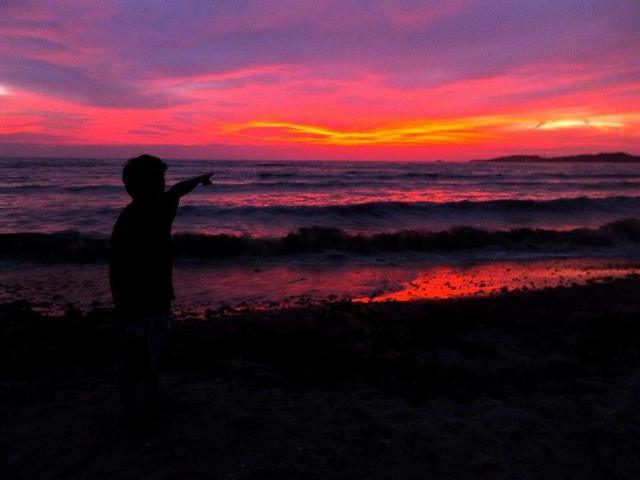

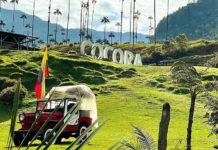
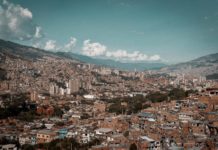








Cool post and very detailed! Never even heard of Playa Taroa. Cheers, man.
thanks! you still in medellin?
thanks! happy you liked it!
So you didnt take the tour? How much did you actually spend then? The story gets a little confusing, but Im looking to head up there this week and really want to do it without a tour! How much was the car from cabo to gallinas? What about total travel cost from Santa Marta to Cabo? Did you find a hostel in Gallinas or was that part of the deal to stay with the local people who drive you there?
i think i spent about 275,000 pesos, total. but i would do it the way we did only if you speak good spanish. otherwise, it can be tricky.
we paid about 150,000 each or so from cabo and i think that was for a roundtrip route, and they bring you to the house with the hammocks. santa marta to cabo was 32,000 pesos.
sorry for the late reply. i’m traveling in peru right now.
hope you have as much fun as i did!!
Hi, Ryan. Glad I found this. Looks great! I’m in Colombia right now, heading up to the coast soon. I’d love to take this same trip. I speak Spanish very well, relatively fluently, but I’m traveling solo. What do you think? Thanks!
hey lisa, if you can, i would try to find a companion to go with you. it’s just always better that way. have a great trip 🙂